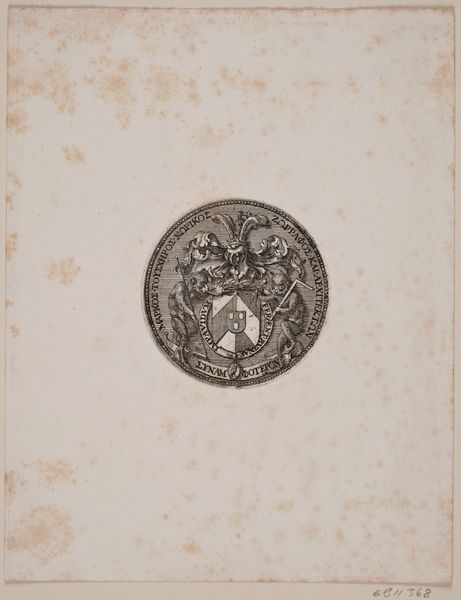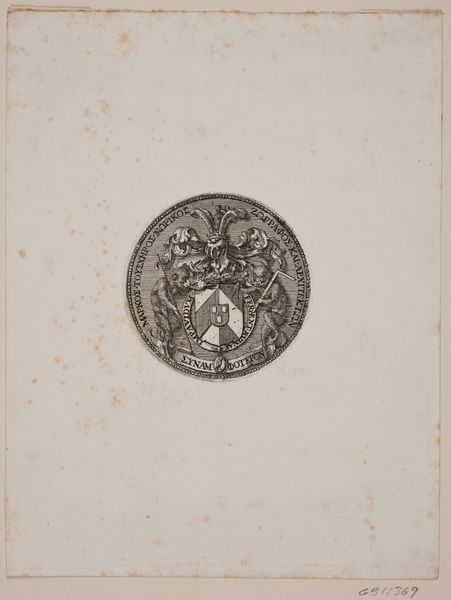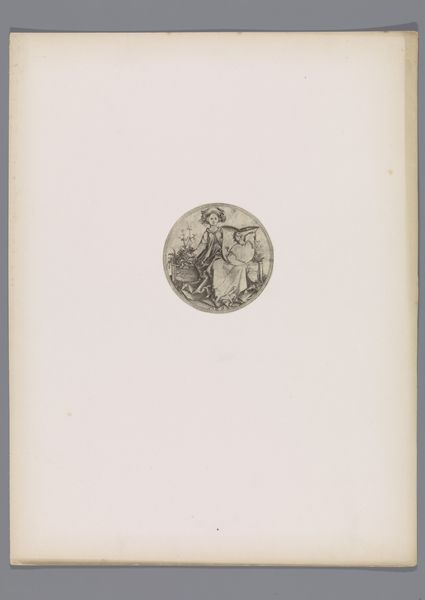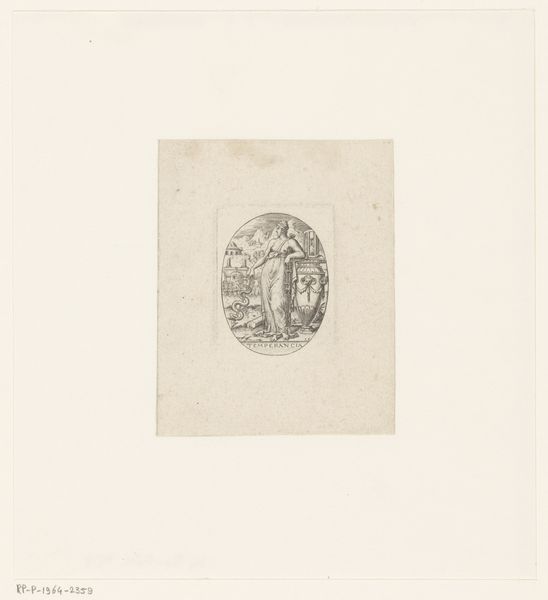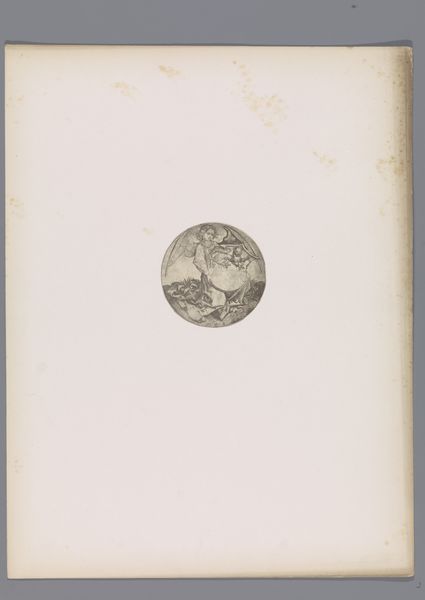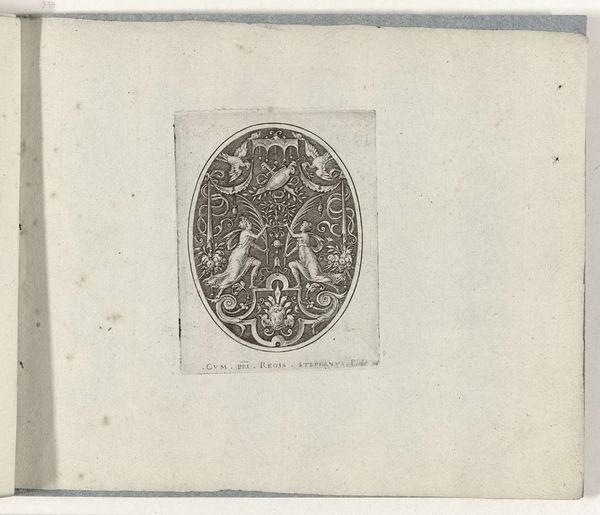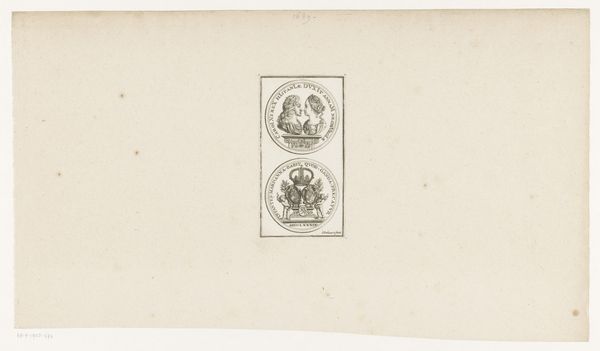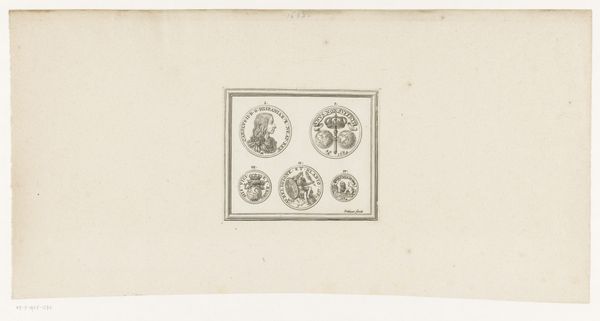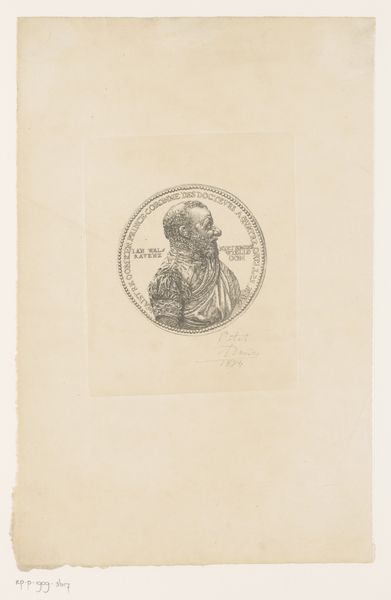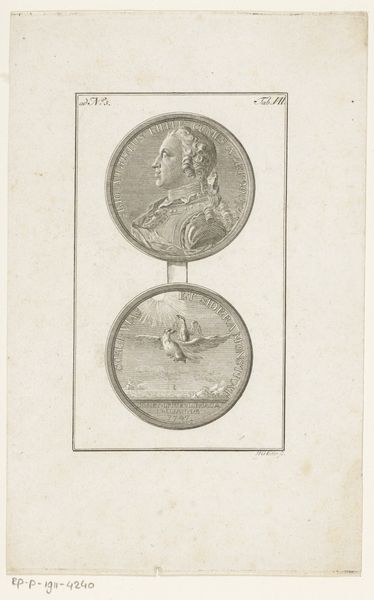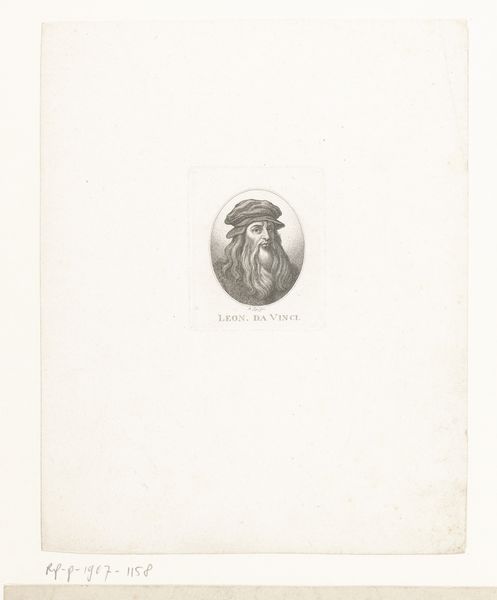
print, engraving
#
baroque
# print
#
geometric
#
line
#
engraving
Dimensions: 69 mm (None) (plademaal)
Marcus Tuscher created this coat of arms, or 'Tuschers våben', a symbolic representation of a family's identity, during the 18th century. At its heart, the shield displays a unique heraldic design, flanked by figures that signify lineage and nobility. Heraldry is a visual language, deeply embedded in history. Here we see the lion, a recurrent motif symbolizing courage and royalty, dating back to ancient Mesopotamia. The symbolic weight of the lion evolved throughout history, reappearing in medieval European heraldry and persisting through the Renaissance. Consider the persistence of such symbols and how collective memory shapes their interpretation. Such iconography, resonating with subconscious understanding, has a powerful force, engaging viewers on a deep, almost primal level. The visual language of heraldry echoes through time, continually reshaped yet retaining fragments of its ancient origins, and reappearing in contemporary society.
Comments
No comments
Be the first to comment and join the conversation on the ultimate creative platform.
